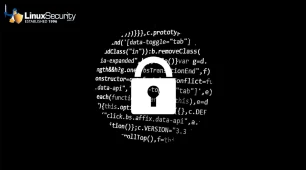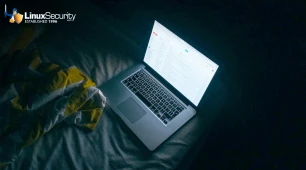
Google recently issued a crucial Chrome update that those using a version of the browser prior to version 132.0.6834.110 should implement immediately. External security researchers recently identified two high-severity vulnerabilities in the V8 JavaScript engine, posing potential risks across operating systems such as Android, Linux, macOS, and Windows. These CVE-2025-0611 and CVE-2025-0612 vulnerabilities could allow attackers to exploit heap-based overflows and out-of-bounds memory access flaws, executing arbitrary code and compromising system security.
To protect your systems, it is crucial to update Chrome to the latest version now. Initiate an update and reboot your browser to activate all new security fixes. Being vigilant with regular updates, informing users about safe browsing practices, and employing continuous security monitoring are vital measures against newly discovered threats. Don't wait for automatic updates - take immediate steps now and keep your systems secure!
In this article, I'll examine these recent Chrome bugs in more depth and discuss practical measures you can take to secure your systems against them.
Understanding These Recent Chrome Vulnerabilities
 Cybercriminals have long targeted Google Chrome due to its massive user base, yet two highly severe vulnerabilities have once more highlighted the importance of maintaining robust security measures. The latest security issues identified in Chrome prior to version 132.0.6834.110 include:
Cybercriminals have long targeted Google Chrome due to its massive user base, yet two highly severe vulnerabilities have once more highlighted the importance of maintaining robust security measures. The latest security issues identified in Chrome prior to version 132.0.6834.110 include:
- CVE-2025-0611 is a heap-based overflow in the V8 JavaScript engine that may lead to heap corruption - an issue in memory management that could cause unexpected behavior such as crashes and allow an attacker to bypass browser security sandboxes and run arbitrary code directly in memory.
- CVE-2025-0612, an out-of-bounds memory access vulnerability, allows applications to read or write data outside the allocated memory boundaries, allowing attackers to execute arbitrary code that could potentially exploit memory corruption. Alan Goodman, who first discovered it, described how it would enable attackers to execute code with memory corruption exploitation capabilities.
Immediate Action Required: Update Chrome Now
The primary action impacted users should take to fortify their systems against these recent bugs should be updating Chrome to its most current version: 132.0.6834.110. To manually update Chrome, launch it, navigate to the menu in the top-right corner, click "Help," and select "About Google Chrome." This will initiate an update check and download process. When finished, reboot Chrome afterward to ensure any potential exploits don't threaten your system.
Regular Updates Are A Security Must
 Keeping Chrome and other applications up-to-date should be part of an ongoing security maintenance routine. Cyber threats evolve constantly, along with any vulnerabilities hackers try to exploit. Regular updates ensure you have access to the most up-to-date patches and features designed to defend against new threats.
Keeping Chrome and other applications up-to-date should be part of an ongoing security maintenance routine. Cyber threats evolve constantly, along with any vulnerabilities hackers try to exploit. Regular updates ensure you have access to the most up-to-date patches and features designed to defend against new threats.
Create a schedule to monitor for updates and install them when available. Doing this regularly reduces attackers' window of opportunity while protecting against known vulnerabilities.
Implementing Continuous Security Monitoring
Securing your system doesn't end with updates alone. Continuous monitoring is vital to detect signs of exploitation or other suspicious activities that could indicate a security breach. Implementing sophisticated monitoring tools will enable you to stay ahead of potential threats.
These tools provide real-time alerts and comprehensive logs that allow you to respond to potential incidents quickly. By continuously monitoring network traffic, system behavior, user activities, and any risks, these tools enable you to identify risks before they become serious.
Beyond Chrome: Ensuring Comprehensive Security
 While we often focus on browser security issues, we must remember that browser protection is only one component of an effective, comprehensive strategy. Be sure to update all software and systems regularly, implement strong password policies, and use multi-factor authentication whenever possible.
While we often focus on browser security issues, we must remember that browser protection is only one component of an effective, comprehensive strategy. Be sure to update all software and systems regularly, implement strong password policies, and use multi-factor authentication whenever possible.
Network segmentation, firewall configurations, and regular security audits provide additional layers of defense that help maintain a safe environment. No single measure can provide complete protection; however, combining various safeguards significantly improves your overall security posture.
Our Final Thoughts on Mitigating These Severe Chrome Flaws
The recent discovery of two high-severity Chrome vulnerabilities is a stark reminder of cyber threats' persistent and ever-evolving nature. As a Linux administrator, your role is essential in safeguarding system security and integrity. Take immediate steps now to manually update Chrome to its most current version, educate users on potential dangers, and implement continuous monitoring measures to detect possible risks early.
Taking proactive steps protects your systems from immediate threats and develops a resilient infrastructure capable of withstanding future challenges. Vigilance, education, and collaboration are the cornerstones of robust security, allowing us to stay one step ahead in the battle against cyber threats.


















